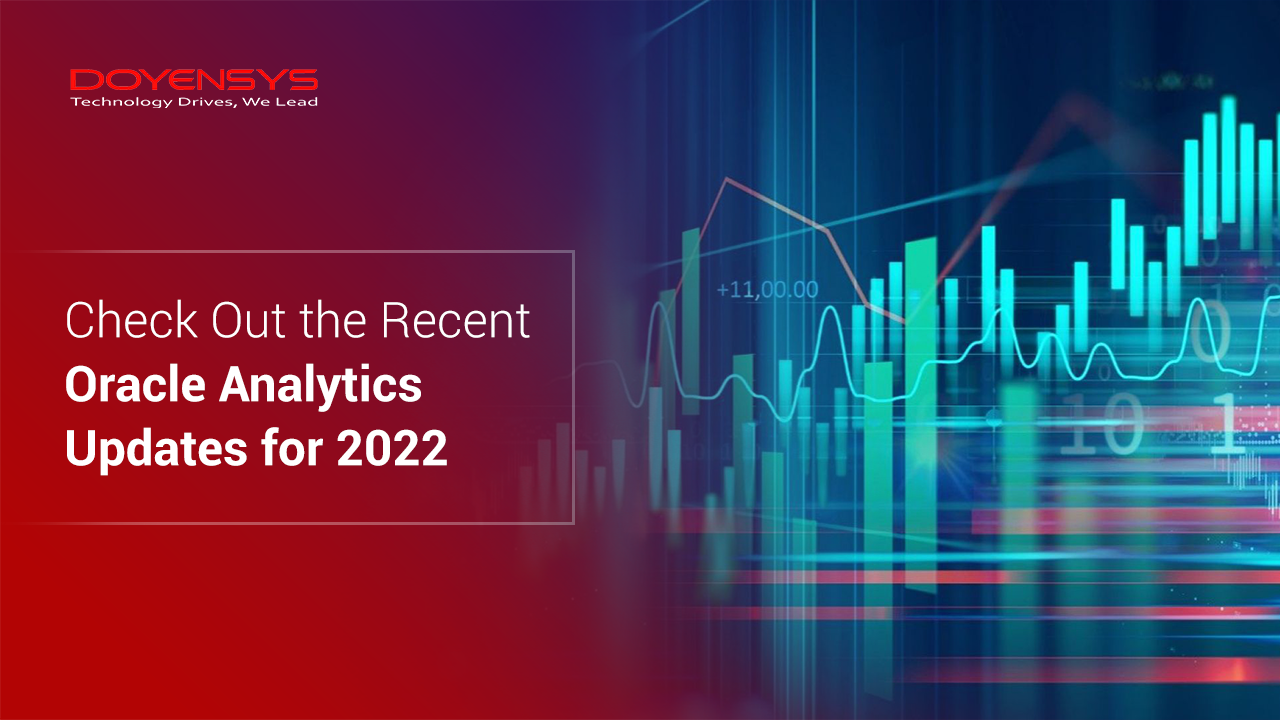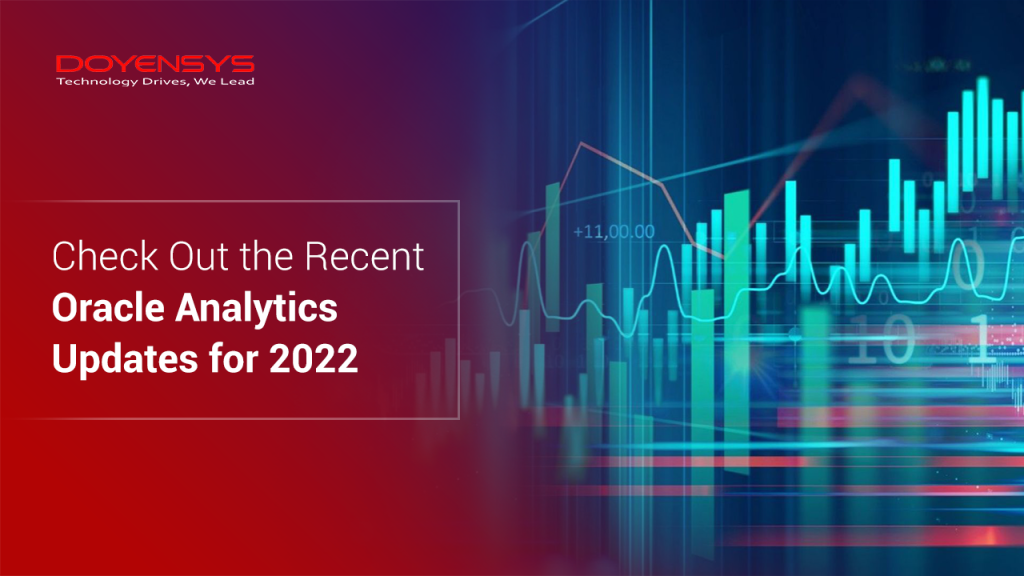
Oracle Analytics is a potent combination of three forces: augmented analytics, self-service analytics, and regulated analytics. Oracle provides a single solution with integrated machine learning and AI that swiftly grows throughout your organization so you can get the most out of your data.
Oracle is committed to continuous product innovation to help users get the insights they need whenever they need them. 2021 was a fantastic year, thanks to numerous new Fortune 500 analytics leaders that used Oracle Analytics.
The Oracle Analytics Product Team has launched over 100 innovations for Oracle Analytics Cloud, and the year 2022 will bring even more exciting news, including top-requested additions, a slew of events, and, as always, ways to get involved in this vibrant and expanding community.

Here’s a rundown of unique updates and enhancements recently added to Oracle Analytics Cloud to offer the users smooth operation.
Redwood Experience:
Oracle Analytics completely incorporates the brand-new Oracle Design Concepts with a code known as Redwood. The Redwood design experience helps you identify, convey, and act on crucial insights with a stunning new style, better spacing, and typefaces friendlier to dense data. It was released in 2021 and will be the default in 2022.
Redwood is built to communicate with users in their preferred language: words. Users should not comprehend the esoteric terminology and hierarchical systems devised by technology vendors. The software in Redwood seeks to comprehend us and the words we use.
Oracle’s goal with Redwood is to provide corporate applications with cutting-edge, consumer-grade user experiences that can be accessed from any device. The Redwood experience encompasses all of our customers’, partners’, and employees’ interactions with the company, not only Oracle user interfaces. It’s a complete reimagining of Oracle customers’ interaction with technology and consuming data.
Cloud Semantic Modeler:
The new semantic modeller is brought to the cloud, which allows you to design hierarchies and create star schemas, semantic models, presentation layers, and much more. It is a much-requested feature that will help Oracle Analytics maintain its position as a leader in data modelling while making you a more successful knowledge worker!
Users can now create branches and add steps to customize their semantic model. To publish your model modifications, you utilize a branch or version.
For experimentation, one can apply the model from the branch to a local service instance. Users can merge that branch with the main branch after the changes are complete. Multiple branches can be merged with the primary branch over time.
AI Vision Analytics:
Oracle Analytics and Oracle Cloud Infrastructure Artificial Intelligence services will be merged in 2022. This service recognizes and organizes objects and text, allowing users to examine photos from Oracle Analytics.
Oracle Cloud Infrastructure (OCI) AI Services include pre-built machine learning models, making it easier for developers to incorporate AI into their apps and business processes.
For more accurate business outcomes, the models can be custom-trained. Models, datasets, and data labels can be reused across services by teams inside an organization. OCI AI Services allows developers to easily integrate machine learning into their products without slowing down the development process.
Automated Insights:
Oracle Analytics isn’t only a data visualization program. It’s an analytics platform that helps you comprehend your data right away from the minute you load it. That’s because machine learning is ingrained at every level and delivers insights automatically to help you get further faster.
When you build a dataset, Oracle Analytics evaluates it and recommends visualizations to give you the most information. This functionality is now only available to Oracle Analytics Leaders, but it will be available to the general public in the first part of the year.
XGBoost & Neural Network Algorithms for ML:
Oracle Machine Learning for SQL XGBoost provides you with registered data, generates XGBoost, creating & following a model by using them to make future predictions. General variables, booster parameters, and task parameters are all used by the OML4SQL XGBoost method. The model settings table is where you set the parameters.
Most of the open-source project’s settings are supported by the algorithm. OML4SQL provides a variety of classification and regression specifications, ranking models, and survival models thanks to XGBoost. The classification machine learning function supports binary and multiclass models, whereas the regression machine learning function supports regression, ranking, count, and survival.
